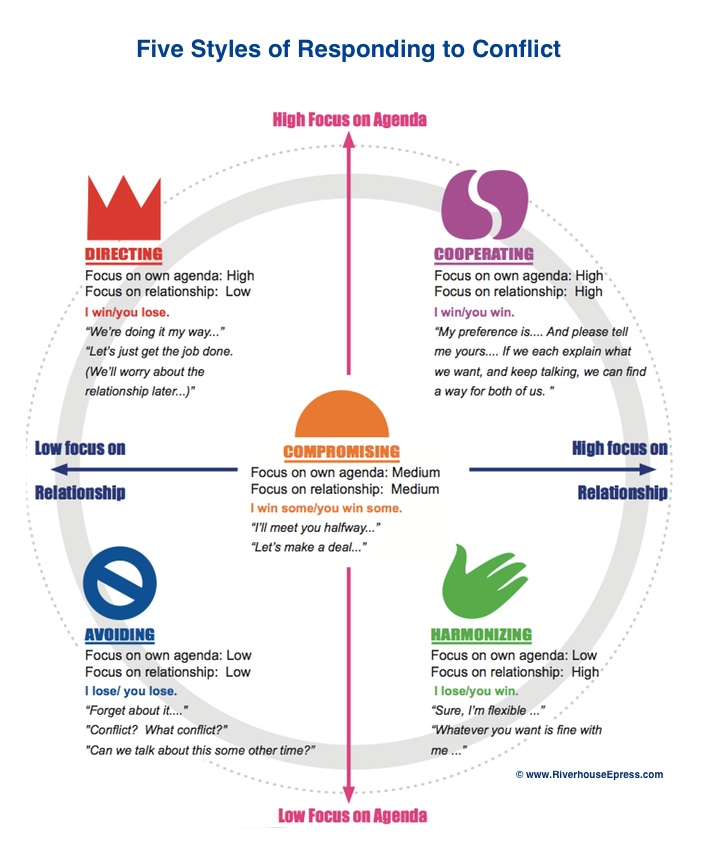Oh no you don’t!
The words come hurdling forth as your colleague storms out the door. It wasn’t your intent to cause World Word III but suddenly you find yourself within the throws of conflict.
What do you do?
How could this have been avoided?
Ron Kraybill pulls back the cover on 5 styles of conflict resolution in this weeks Meisha Rouser Show. You can listen in for yourself at Podcast 14: Exploring Conflict Styles.
Who is Ron and why should you care?
Ron is a pioneer in the field of conflict resolution as well as peace building. He began his work in the 70’s. He is well known for his creation of Style Matters: The Kraybill Conflict Style Inventory. Laypeople and leaders alike are able to take conflict management to a much more healthy level by following the techniques he brings forward.
In this interview Ron covers the 5 styles of responding to conflict which are:
- Directing
- Avoiding
- Cooperating
- Harmonizing
- Compromising
Each of these conflict resolution styles have their good and bad aspects. No one style is better than another. And, more importantly, any one individual can exhibit any one of the conflict resolution styles depending on how they are personally perceiving the circumstances at hand.
Unfortunately, using the wrong conflict resolution style within a given situation can cause more harm than good. This is why understanding these 5 styles is so critical for the success of your company’s personalities, goals and objectives.
Let’s dig deeper.
Lets start with the “directing” style. This is where someone insists that things are going to be done their way no matter what your opinion might be. They are more focused on making sure the task is completed successfully rather than ensuring everyone enjoys the process.
The “avoiding” style is where everyone loses because the party in conflict refuses to engage but clings to the concept of ignoring instead. It’s like a festering wound that refuses to be healed.
When using the “cooperating” style people are highly engaged in making sure that both the agenda and the relationship are addressed and approached in such a way that everyone wins. It requires a great deal of listening and interaction for success.
The “harmonizing” style sees the relationship as more important than getting their objectives met within a given event. They are willing to sacrifice their preferences in the task in-order to maintain unity with the people involved.
The final style to identify is “compromising”. When using this style the goal is to balance to the other person’s conflict resolution style. While getting some of their way within the task is important, they also are engaged in the relationships’ cohesiveness through the event.
A very important and unique aspect of conflict management is understanding not only your conflict style and that of the other person(s), but also to understand that there are usually two phases to conflict: the calm phase and the storm phase.
The calm phase of conflict is when emotions are still somewhat in control. The storm stage is when emotions have taken over and things get heated. The Style Matters: The Kraybill Conflict Style Inventory assessment identifies a persons’ style in the different phases of conflict, as it is usually different from one phase to the other.
Within all these conflict styles Ron brought forward that by both listening and observing the style being used within the process can help you to successfully navigate through conflict with the least amount of stress. Knowing these styles before conflict arises can actually reduce and and help you to manage your way through a conflict situation.


